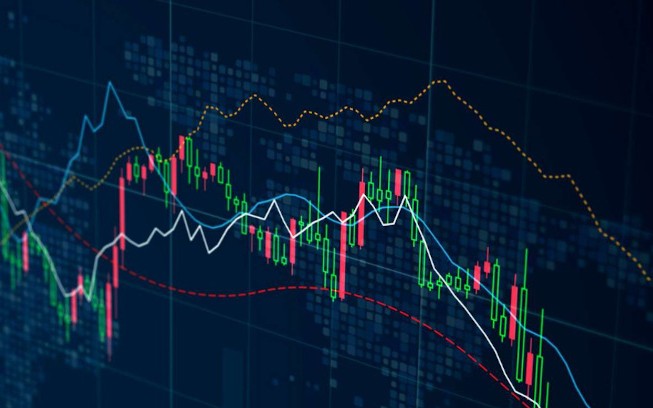
The World of Forex Trading: Understanding the Market
Forex trading, or foreign exchange trading, refers to the global marketplace for exchanging national currencies against one another. It’s critical for businesses, governments, and investors as it facilitates international trade and investment. With a daily trading volume exceeding $6 trillion, the Forex market is the largest and most liquid market in the world. For both new and experienced traders, understanding the fundamentals is essential for profiting from currency fluctuations. To gain insight and guidance, you can visit forex trading site kuwait-tradingplatform.com, a comprehensive resource for Forex traders.
What Is Forex Trading?
At its core, Forex trading involves the exchange of currencies based on their respective values. Traders make profits by buying low and selling high, capitalizing on price movements as currencies fluctuate due to various factors such as economic indicators, political events, and market sentiment. The Forex market operates 24 hours a day, five days a week, making it accessible for traders across different time zones.
How The Forex Market Works
The Forex market consists of a network of banks, financial institutions, corporations, and individual traders who all participate in currency exchanges. Unlike stock markets, which have physical locations, Forex trading is conducted electronically over-the-counter (OTC). This means that trades are executed through computer networks rather than centralized exchanges. The market is divided into numerous currency pairs, where one currency is exchanged for another, such as EUR/USD (Euro/US Dollar) or GBP/JPY (British Pound/Japanese Yen).
Understanding Currency Pairs

Currency pairs are categorized into three main groups: major pairs, minor pairs, and exotic pairs. Major pairs include the most traded currencies, featuring the US dollar. Minor pairs do not involve the US dollar but consist of other widely traded currencies, while exotic pairs refer to currencies from developing nations paired with major currencies. Understanding these groupings helps traders to gauge market dynamics effectively.
Factors Influencing Forex Prices
Several factors influence currency prices, including:
- Economic Indicators: Data such as GDP, employment rates, and inflation affect currency values. Strong economic performance generally strengthens a currency.
- Political Stability: Countries that exhibit political stability are more attractive to foreign investors, bolstering their currency value.
- Market Sentiment: Traders’ perceptions and behaviors can influence currency prices. News reports, social media, and geopolitical events can sway market sentiment significantly.
- Central Bank Policies: Monetary policy decisions made by central banks, such as interest rate changes, have a direct impact on currency valuation.
Trading Strategies in Forex
Successful Forex trading requires effective strategies tailored to individual trading styles. Here are a few popular strategies:
- Scalping: A short-term strategy focusing on quick trades to capture small price movements. Scalpers hold positions for seconds to minutes, closing them quickly.
- Day Trading: Traders buy and sell currency pairs within the same day, avoiding overnight risk. This strategy requires close monitoring of the market.
- Swing Trading: This approach involves holding positions for several days to capture larger price shifts. Swing traders analyze trends and patterns, looking for optimal entry points.
- Position Trading: A long-term strategy where traders hold positions for weeks or months, based on fundamental analysis rather than short-term price fluctuations. This method requires patience and in-depth research.

Choosing a Forex Trading Platform
Selecting the right Forex trading platform is crucial for trading success. Some key features to consider when choosing a platform include:
- Regulation: Ensure the platform is regulated by a recognized authority to protect your funds and provide a fair trading environment.
- User-Friendly Interface: A straightforward and intuitive interface enables traders to navigate the platform easily, enhancing their trading experience.
- Trading Tools: Look for platforms that offer technical analysis tools, charting capabilities, and educational resources to support your trading strategy.
- Customer Support: Reliable customer support can help address any issues or questions that arise during your trading journey.
Risk Management in Forex Trading
Risk management is vital for Forex traders to protect their investments and minimize losses. Here are some effective risk management techniques:
- Set Stop-Loss Orders: These orders automatically close a position at a predetermined price to prevent excessive losses.
- Diversify Your Portfolio: Avoid focusing on a single currency pair. Diversifying your trades across multiple pairs can reduce risk.
- Use Leverage Wisely: Leverage can amplify profits, but it can also magnify losses. Ensure you understand the risks associated with leveraged trading.
- Limit Your Exposure: Only risk a small percentage of your trading capital on any single trade to manage potential losses effectively.
Conclusion
Forex trading offers lucrative opportunities for individuals looking to capitalize on currency fluctuations. By understanding the market structures, developing effective strategies, and implementing sound risk management practices, traders can enhance their chances of success. Whether you are a novice or an experienced trader, continuous learning and adaptation to market conditions are key components of a successful Forex trading career. For further information and resources, consider exploring platforms like kuwait-tradingplatform.com, where you can find additional insights and tools to aid your trading journey.
